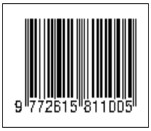KARAKTERISTIK LAJU RESAPAN LUBANG BIOPORI PADA BEBERAPA JENIS SAMPAH ORGANIK
Abstract
Many efforts have been made by various parties in overcoming the problem of waste and flooding, in residential areas that are starting to develop, one of which is by utilizing organic waste as a biopore filler to improve soil absorption and produce compost. The biopore infiltration hole technology can utilize organic waste to fill biopore media, which is used as a food source by biota in the soil layer. This study aims to determine the rate of biopore infiltration in the use of several types of organic waste such as (1) straw, (2) leaves and (3) household waste. Biopori is made from pipapvc 4 ”and 1 m in length with installation into the ground 80 cm and the rest above the soil surface 20 cm for testing purposes with a total of 12 test points and tested after 7 days to 21 days. For biopore holes without filler, the highest absorption rate was 85 cm / hour and the lowest was 42,167 cm / hour. The type of straw waste obtained infiltration rate of 179.34 cm / hour and the lowest infiltration rate of 86,770 cm / hour, with an average of 113.56 cm / hour. In the filler with leaf litter, the highest infiltration rate was 100,111 cm / hour and the lowest was 59,743 cm / hour, with an average value of 84.69 cm / hour. Whereas for household waste, the lowest absorption rate was 38 cm / hour and the highest was 100,111 cm / hour, and the average was 52,979 cm / hour. At the age of 7 days the waste has the highest absorption rate and after the waste is 21 days old it should be replaced with a new one.
Keywords
Full Text:
PDFReferences
Asdak, C. (1995). Hidrologi dan Pengelolaan Daerah Aliran Sungai. Yogyakarta: Gadjah Mada University Press.
BR.Ginting, R. (2010). Laju Resapan Air Pada Berbagai Jenis Tanah Dan Berat Jerami Dengan Menerapkan Teknologi Biopori Di Kecamatan Medan Amplas. Universitas Sumatera Utara.
Brata, Kamir R. (2008). Lubang Resapan Biopori. Jurusan tanah Fakultas Pertanian IPB. Bogor.
Clothier, B. (2001). Infiltration. p. 237-277. In Soil and Environmental Analyses: Physical methods. In Smith et al. (Eds.). Marcel Dekker, Inc. United States of America.
Das, Braja M. (1995). Mekanika Tanah 1. Erlangga. Jakarta.
Habibiyah, A. W., & Widyastuti, S. (2016). Pengaruh Jenis Sampah, Variasi Umur Sampah Terhadap Laju Infiltrasi Lubang Resapan Biopori (LRB). Wahana, 66(1), 33–39. https://doi.org/10.36456/wahana.v66i1.480
Hilwatullisan. (2011). Lubang Resapan Biopori (Lrb) Pengertian Dan Cara Membuatnya Di Lingkungan Kita. Media Teknik, Vol. 8(No. 2), Hal. 1-11.
Juliandari, M. (2013). Efektivitas Lubang Resapan Biopori Terhadap Laju Resapan (Infiltrasi). Jurnal Teknologi Lingkungan Lahan Basah, 1(1), 1–10. https://doi.org/10.26418/jtllb.v1i1.3441
Karuniastuti, N. (2014). Teknologi Biopori untuk Mengurangi Banjir dan Tumpukan Sampah Organik. Jurnal Forum Teknologi, 04(2), 64.
Martha, L. (2018). Studi Resapan Air Hujan Melalui Lubang Resapan Biopori (LRB) Sebagai Upaya Mereduksi Beban Drainase Di Universitas Islam Negri Sunan Ampel Surabaya (Issue 2) [UNIVERSITAS ISLAM NEGERI SUNAN AMPEL SURABAYA]. https://doi.org/10.1051/matecconf/201712107005
Menteri Negara Lingkungan Hidup No. 12 . (2009). Peraturan Menteri Negara Lingkungan Hidup Nomor 06 Tahun 2009 tentang Laboratorium Lingkungan. KementrianLingkungan,53.https://doi.org/10.1017/CBO9781107415324.004
Murbandono, H.S.L. (1999). Membuat Kompos. Penebar Swadaya. Jakarta.
Sibarani, R. T., & Bambang, D. (2012). Penelitian Biopori Untuk Menentukan Laju Resap Air Berdasarkan Variasi Umur Dan Jenis Sampah Research Of Biopores To Determine The Rate Of Water Absorption Based On Variation In Age And Types Of Solid Waste Jurusan Teknik Lingkungan FTSP-ITS Surabaya Pend. Jurusan Teknik Lingkungan. FTSP. ITS-Surabaya, 1–14.
Sukaresmi, D. I. D., Megamendung, K., & Bogor, K. (2011). Pada Penggunaan Lahan Pertanian Dan Pemukiman Mawar Kusumawardani Program Studi Manajemen Sumberdaya Lahan.
Sutanto. (2005). Permeabilitas Tanah (pp. 10–50).
Wikipedia. (2019). Infiltrasi (Hidrologi). En.Wikipedia.Org. https://translate.google.com/translate?u=https://en.wikipedia.org/wiki/Infiltration_(hydrology)&hl=id&sl=en&tl=id&client=srp&prev=search.
DOI: https://doi.org/10.35327/gara.v15i1.204
Refbacks
- There are currently no refbacks.
Copyright (c) 2021 GANEC SWARA

This work is licensed under a Creative Commons Attribution-ShareAlike 4.0 International License.










